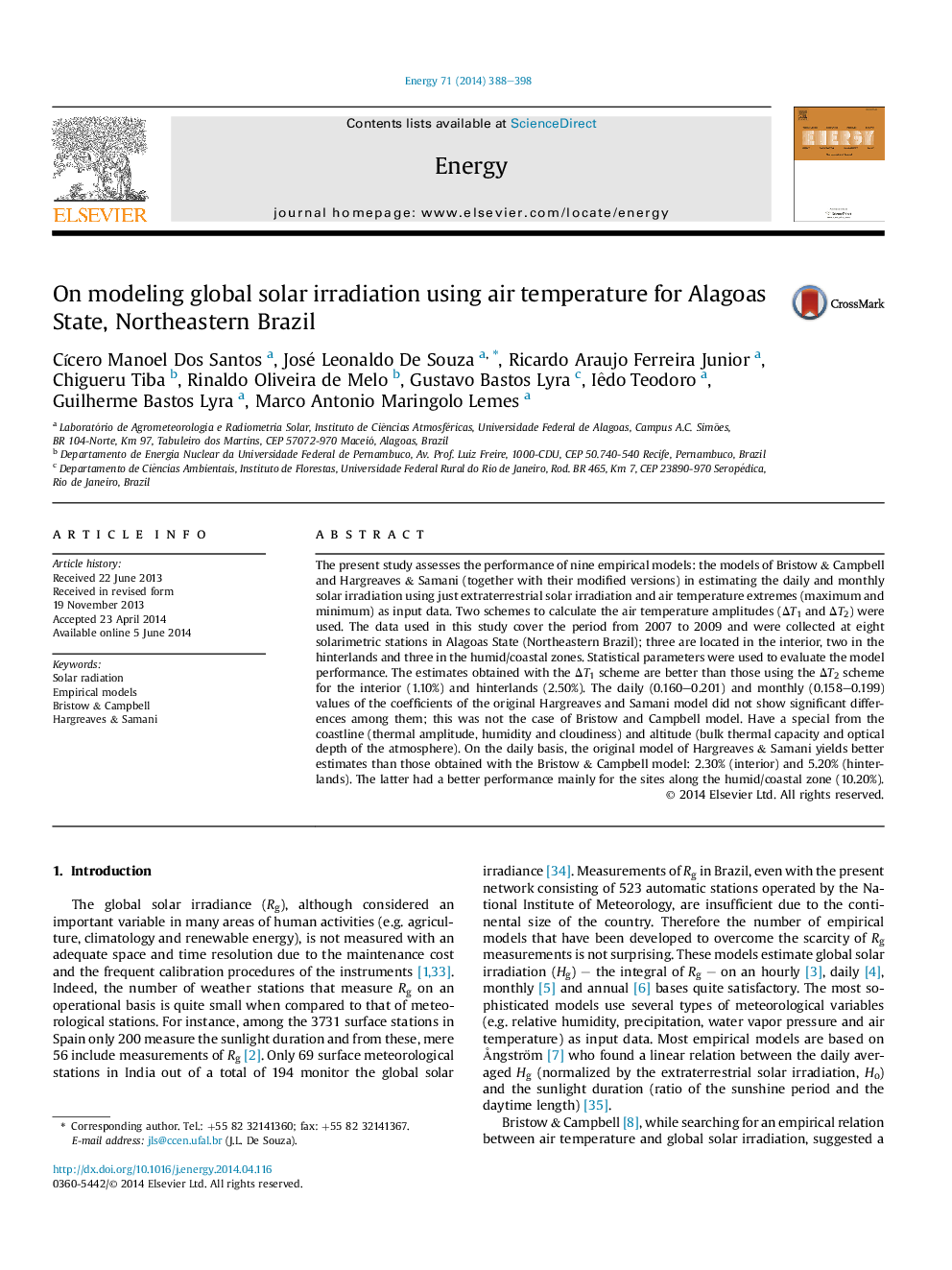| Article ID | Journal | Published Year | Pages | File Type |
|---|---|---|---|---|
| 1732401 | Energy | 2014 | 11 Pages |
•Calibration of solar irradiation models that use air temperature.•Estimates of the solar irradiation in Alagoas, Northeastern Brazil.•Hargreaves & Samani model performed best for the interior and hinterland.•The Bristow & Campbell model was more suitable for coastal and humid zones.
The present study assesses the performance of nine empirical models: the models of Bristow & Campbell and Hargreaves & Samani (together with their modified versions) in estimating the daily and monthly solar irradiation using just extraterrestrial solar irradiation and air temperature extremes (maximum and minimum) as input data. Two schemes to calculate the air temperature amplitudes (ΔT1 and ΔT2) were used. The data used in this study cover the period from 2007 to 2009 and were collected at eight solarimetric stations in Alagoas State (Northeastern Brazil); three are located in the interior, two in the hinterlands and three in the humid/coastal zones. Statistical parameters were used to evaluate the model performance. The estimates obtained with the ΔT1 scheme are better than those using the ΔT2 scheme for the interior (1.10%) and hinterlands (2.50%). The daily (0.160–0.201) and monthly (0.158–0.199) values of the coefficients of the original Hargreaves and Samani model did not show significant differences among them; this was not the case of Bristow and Campbell model. Have a special from the coastline (thermal amplitude, humidity and cloudiness) and altitude (bulk thermal capacity and optical depth of the atmosphere). On the daily basis, the original model of Hargreaves & Samani yields better estimates than those obtained with the Bristow & Campbell model: 2.30% (interior) and 5.20% (hinterlands). The latter had a better performance mainly for the sites along the humid/coastal zone (10.20%).
